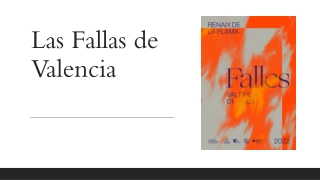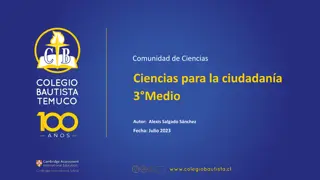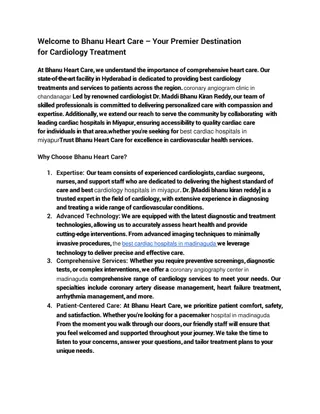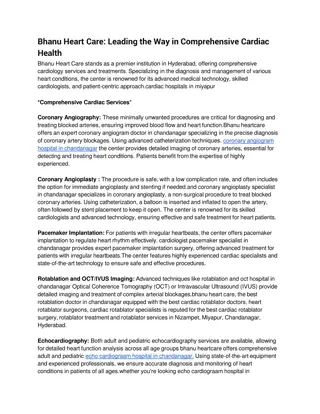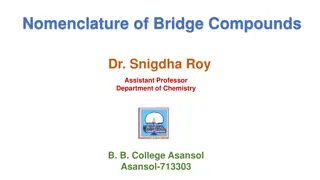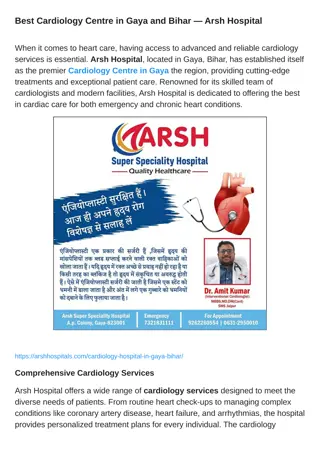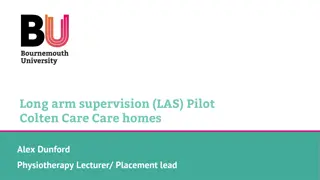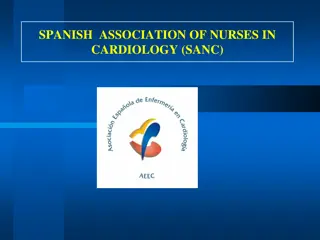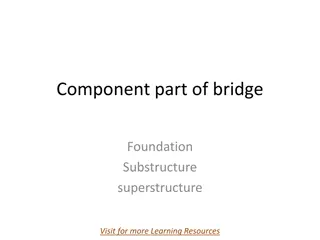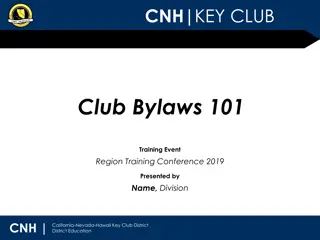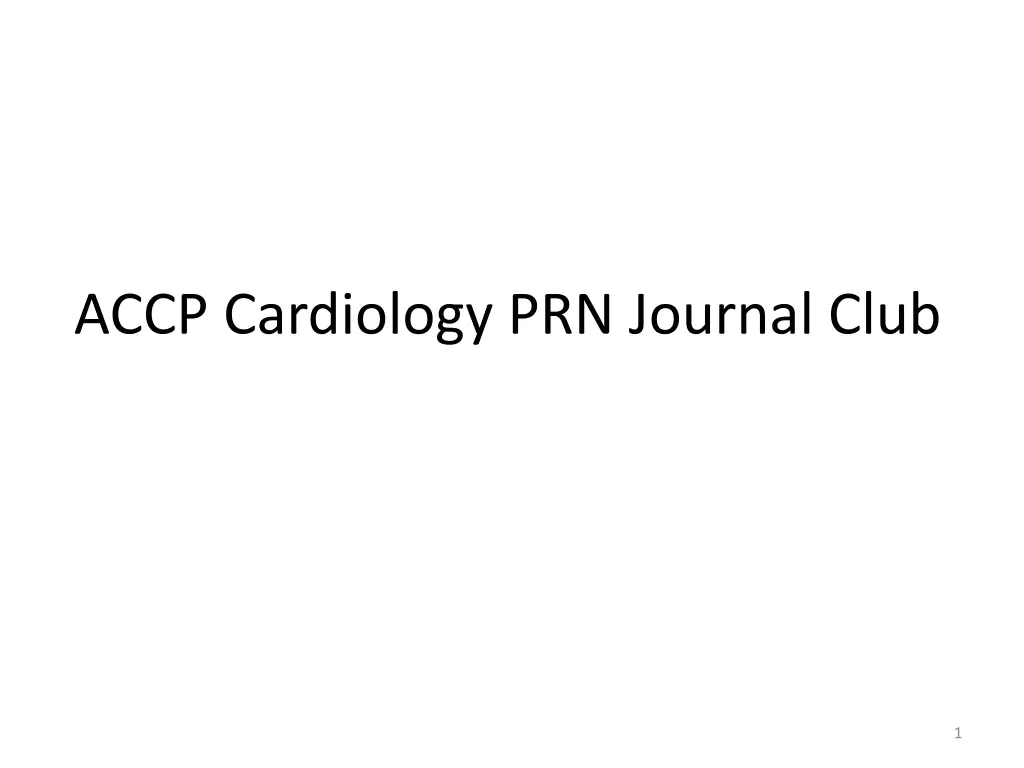
Perioperative Bridging Anticoagulation in Atrial Fibrillation
Learn about the BRIDGE trial focusing on perioperative bridging anticoagulation in patients with atrial fibrillation. Explore guideline recommendations, background information, and previous literature addressing the decision-making process for bridging during surgical procedures to balance risks effectively.
Download Presentation

Please find below an Image/Link to download the presentation.
The content on the website is provided AS IS for your information and personal use only. It may not be sold, licensed, or shared on other websites without obtaining consent from the author. If you encounter any issues during the download, it is possible that the publisher has removed the file from their server.
You are allowed to download the files provided on this website for personal or commercial use, subject to the condition that they are used lawfully. All files are the property of their respective owners.
The content on the website is provided AS IS for your information and personal use only. It may not be sold, licensed, or shared on other websites without obtaining consent from the author.
E N D
Presentation Transcript
Announcements Thank you attending the ACCP Cardiology PRN Journal Club Thank you if you attended before or have been attending I have created a PB Works Site that will house our recorded calls, handouts, and Summary/Q&A documents. The link is https://accpcardsprnjournalclub.pbworks.com/ If there are any suggestions, please let us know.
The BRIDGE Trial Perioperative Bridging Anticoagulation in Patients with Atrial Fibrillation Leah A. Sabato, PharmD PGY2 Cardiology Resident Vanderbilt University Medical Center Leah.Sabato@vanderbilt.edu Mentor: Michael Gulseth, PharmD, BCPS Program Director of Anticoagulation Services Sanford USD Medical Center
Disclosure I have no conflicts of interest to disclose
Background ~400,000 patients/year require interruption of warfarin for elective surgery Decision to bridge in AF balances risk of ATE and bleeding CHADS2 and CHA2DS2-VASC stratify annual ATE risk Periprocedural bleeding risk depends on surgery type ATE: arterial thromboembolism; AF: atrial fibrillation Dunn AS, et al. J Thromb Haemost. 2007 Nov;5(11):2211-8.
Guideline Recommendations CHEST 2012 ATE Risk Definition Recommendation CHADS2: 5-6 High Stroke/TIA within 3 months Rheumatic valvular disease Bridge Choose based on individual patient-and surgery-related factors Moderate CHADS2: 3-4 Low risk CHADS2: 0-2 Do not bridge Douketis JD, et al. Chest. 2012 Feb;141(2 Supple):e326-50S
Guideline Recommendations AHA/ACC 2014 For patients with AF without mechanical heart valves who require interruption of warfarin or new anticoagulants for procedures, decisions about bridging therapy (LMWH or unfractionated heparin) should balance the risks of stroke and bleeding and the duration of time a patient will not be anticoagulated. January CT et al. Circulation. 2014 Dec 2;130(23):e199-267.
Previous Literature Siegel, et al (2012) Bridging associated with NSD in TE (OR:0.8, 0.42-1.54) and increased MB(OR:3.60, 1.52-8.50) ORBIT-AF (2015) Bridging associated with NSD in Stroke/SE (OR: 1.82, 0.37-9.06) and increased MB (3.6% vs 1.2%, p=0.0007) RE-LY Substudy (2015) Bridging associated with NSD in Stroke/SE (OR: 1.82, 0.37-9.06) and increased MB(OR:3.68, 2.24-6.04) NSD: No significant difference, TE: thromboembolism, MB: Major bleeding, SE: systemic embolism Siegal D, et al. Circulation. 2012 Sep 25;126(13):1630-9. Steinberg BA, et al. Circulation. 2015 Feb 3;131(5):488-94. Douketis JD, et al. Thromb Haemost. 2015 Mar;113(3):625-32.
Objectives & Hypotheses To compare the efficacy of bridging with LMWH with no bridging on the rate of ATE Hypothesis: No bridging will be non-inferior To compare the safety of bridging with LMWH with no bridging anticoagulation on the rate of major bleeding Hypothesis: No bridging will be superior Douketis JD, et al. New Engl J Med. 2015 Aug 27;373(9):823-33.
Methods Prospective, randomized, double blind, placebo controlled, multicenter trial in the US and Canada Patients with AF on warfarin with elective procedure requiring anticoagulation interruption Perioperative dalteparin 100 units/kg SC BID Perioperative matching placebo
Inclusion & Exclusion Criteria Inclusion Adults with valvular or non-valvular atrial fibrillation On warfarin for >3 months (INR goal 2-3) requiring interruption At least one stroke risk factor: age, HTN, DM, CHF, previous ischemic stroke, systemic embolism, TIA Exclusion Any mechanical prosthetic heart valve Stroke/systemic embolism or TIA within 12 weeks Major bleeding within past 6 weeks or thrombocytopenia Selected surgeries or procedures: cardiac surgery, neurosurgery, high risk non-surgical procedures Calculated CrCl<30 mL/min
Primary Endpoints Efficacy: arterial thromboembolism at 30 days Ischemic stroke Transient ischemic attack Systemic embolism Safety: major bleeding Symptomatic (or clinically-overt) bleeding associated with Transfusion of 2 units pRBCs or whole blood Decrease in hemoglobin level >2 g/dL Need for re-operation or invasive intervention Symptomatic or clinically-overt bleeding at a critical anatomic site Fatal bleeding
Statistics Efficacy endpoint (noninferiority): 1641 patients needed Assumed 1% event rate with 1% noninferiority margin 80% power, one-sided =0.025 Safety endpoint (superiority): Assumed a 3% rate in the bridging arm and 1% rate in the no bridging arm 1641 patients provide 99% power Rate of primary endpoint lower than expected Recalculated sample size of 1882 would provide nearly 90% power for the two primary endpoints Rate of primary endpoint was lower than expected Recalculated sample size of 1,882 would provide nearly 90% power for the two primary endpoints
Results: Baseline Characteristics No Bridging n=918 Bridging n=895 Age yr 71.8+8.74 71.6+8.88 Male Sex Wt kg 696(73.3) 686(73.4) 96.2+24.87 95.4+23.50 MI 138(14.5) 155(16.6) Previous Stroke 79(8.3) 99(10.6) Mitral stenosis CrCl mL/min 19(2.0) 10(1.1) 88.1+39.5 87.6+40.14 Minor Procedure 781(85.1) 758(84.7) Major Procedure 94(10.2) 89(9.9) Expressed as mean+SD | All others expressed as no.(%) Douketis JD, et al. New Engl J Med. 2015 Aug 27;373(9):823-33.
CHADS2 Distribution 45 40 35 30 Percentage 25 Bridging 20 No Bridging 15 10 5 0 0 1 2 3 4 5 6 CHADS2 Score Mean CHADS2 score 2.3 86% of patients had a CHADS2 score of 1-3
Results: Efficacy No Bridging n=918 Bridging n=895 P-value 0.01 , 0.73 Primary Endpoint: ATE 4(0.4) 3(0.3) Stroke 2(0.2) 3(0.3) - TIA 2(0.2) 0 - Systemic embolism 0 0 - Myocardial infarction 7(0.8) 14(1.6) 0.10 Deep vein thrombosis 0 1(0.1) 0.25 Pulmonary embolism 0 1(0.1) 0.25 All expressed as no.(%) p-value for noninferiority. All others represent p-value for superiority.
Results: Safety No Bridging n=918 Bridging n=895 P-value Primary Endpoint: Major bleeding 12.1(1.3) 29(3.2) 0.005 Fatal bleeding 0 0 - Minor bleeding 110(12.0) 187(20.9) <0.001 Death 5(0.5) 4(0.4) 0.88 All expressed as no.(%)
Conclusions No bridging strategy was non-inferior to bridging in terms of ATE prevention No bridging strategy was superior to bridging in terms of major bleeding Net clinical benefit in favor of forgoing bridging
Critique 62.7% of cohort had CHADS2<2 Low percentage of high risk patients Patients with recent stroke excluded Use of the CHA2DS2-VASC to stratify perioperative risk? Little description of patients who reached primary endpoints Use of dalteparin vs. enoxaparin
Impact Results support current practice to forgo bridging in low risk patients (CHADS2 0-2) Supports no bridging in moderate risk patients (CHADS2 3-4) Confirms bleeding risk found in observational studies On the horizon Periop-2 trial (estimated completion: March 2017)
Acknowledgements Journal club mentor Michael Gulseth, PharmD, BCPS Program Director Daniel C. Johnson, PharmD, BCPS (AQ-Cardiology) ACCP Cardiology PRN Journal Club Coordinator Craig J. Beavers, PharmD, FAHA, AACC, BCPS (AQ Cardiology), CACP
The Bridge Trial Perioperative Bridging Anticoagulation in Patients with Atrial Fibrillation Leah A. Sabato, PharmD PGY2 Cardiology Resident Vanderbilt University Medical Center Leah.Sabato@vanderbilt.edu Mentor: Michael Gulseth, PharmD, BCPS Program Director of Anticoagulation Services Sanford USD Medical Center
Thank you for attending! If you would like to be a mentor, or have questions or comments please e-mail the journal club at accpcardsprnjournalclub@gmail.com or craig.beaverspharmd@gmail.com Join us next month when we hear the MATRIX Trial from Amy Lehnert, PharmD PGY-2 Cardiology from UK Healthcare with James Coons, PharmD as mentor 24

![[PDF READ ONLINE] LAS VEGAS TRAVEL GUIDE 2023: DISCOVERING THE EXCITEMENT AND BE](/thumb/2060/pdf-read-online-las-vegas-travel-guide-2023-discovering-the-excitement-and-be.jpg)

